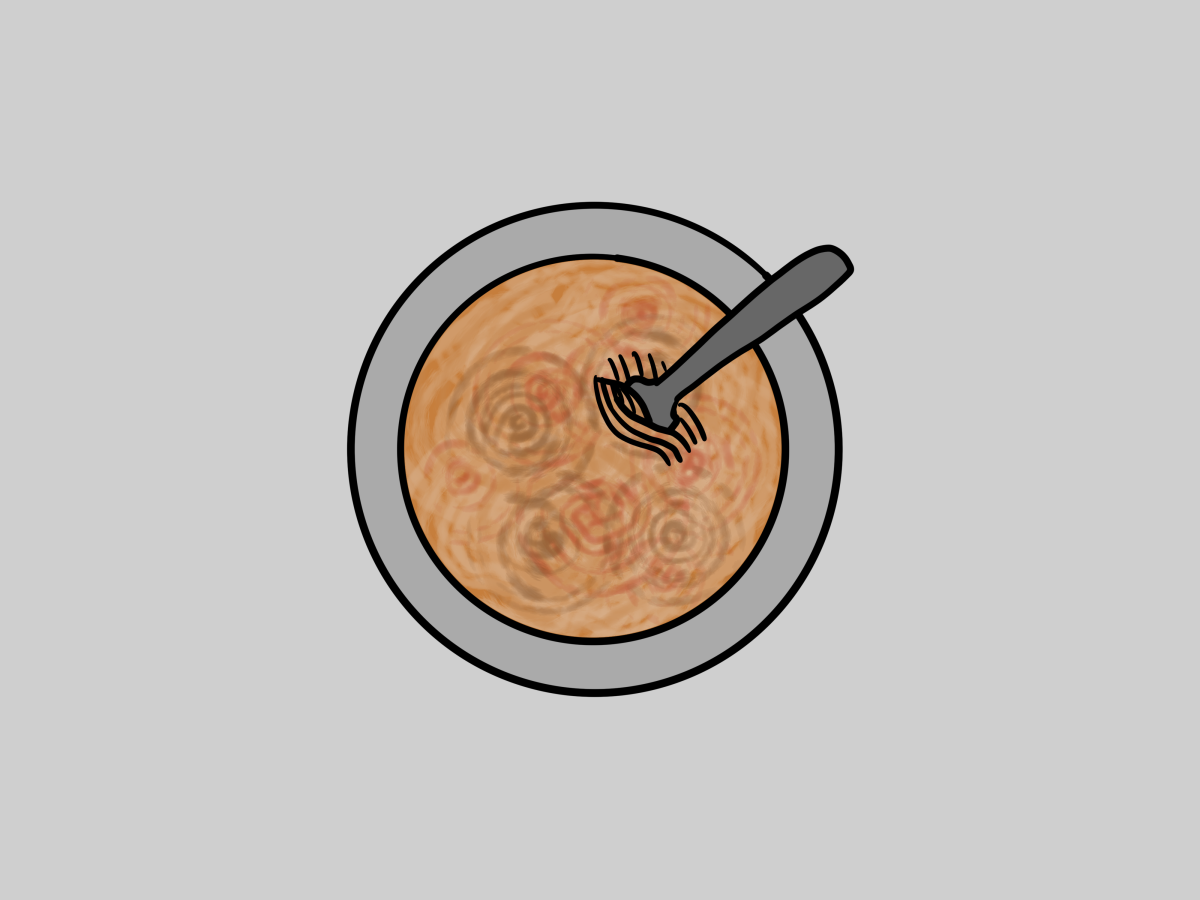For a majority of high school students, dinner is prepared by their parents, something many of us tend to take for granted. As we found out, cooking a meal for four is harder than it appears. We decided to challenge ourselves by creating a three-course traditional Italian meal to serve to our family and friends. We faced many bumps along the road; from lumpy pasta sauce to our crippling inability to dice a tomato, it’s safe to say we learned a lot from this experience. Cooking the bruschetta, cacio de pepe, and apple torte took us around two hours to complete. Our final meal was far from perfect, but our experience was very enlightening.
To begin, we divided up the tasks to be as efficient as possible. We started off by making the apple torte, the quickest and easiest process of the three. We gathered the ingredients: apples, butter, sugar, eggs, and a pinch of cinnamon for warmth and flavor. We precisely skinned the apples and carefully combined them with a sprinkling of sugar and cinnamon. In a separate bowl, we added the butter, sugar, flour, and eggs to create the batter. We then layered the batter with the slices of apple in a designated baking dish. The transformative moment arrived as the torte was placed in the oven, allowing it to undergo an evolution from the mushy layers of batter to the more commonly known golden brown dessert. Finally, we topped it with some homemade whipped cream and placed it on the table to be enjoyed.
Armed with ripe tomatoes, fragrant basil, and a crispy baguette, we dove into the meticulous process of crafting an authentic bruschetta. Our first obstacle was our lack of experience in dicing tomatoes. After scouring countless YouTube tutorials, we were finally able to haphazardly and somewhat presentably dice our tomatoes. We mixed fresh basil, acidic balsamic vinegar, and minced garlic (unsurprisingly, another challenge) to create our topping. While allowing the flavors to meld, we sliced the baguette and crisped it up in the air fryer with a touch of oil. To assemble, we began with a layer of fresh mozzarella on the baguette slices, topped it with the prepared topping, and finished by drizzling balsamic vinegar over our creation. The outcome proved to be a crowd-pleaser, leaving us with no leftovers to spare.
For our final and main dish, we used the trusted New York Times recipe for our cacio de pepe. Although the final result of our dish was delicious, it was not made without struggles. The recipe required us to grate pecorino romano and parmigiano reggiano cheeses while simultaneously boiling spaghetti. After we finished doing both, we combined the grated cheese with some water to make a thick paste. However, once we added the spaghetti to the paste as instructed, the cheese did not melt correctly, and we were left with a curdled mess. Feeling discouraged, we attempted to save our dish by melting the whole dish over the stove. To our surprise and relief, the sauce melted and the dish was finished. The pasta was thick, creamy, and very rich with a deep, Italian flavor.
After careful preparation, precise timing, and the intricate assembling of dishes, our three-course traditional Italian meal came to a close. After scraping our plates clean, we were left with only the aromas of the three dishes wafting through the kitchens—and of course, the mountain of dishes. To complete our final task, we worked our way through the dishes, wiped the counters, and placed every ingredient back where it belonged. As we reflected on the hardships of making a full meal, a new sense of gratitude for our parents washed over us.





































































